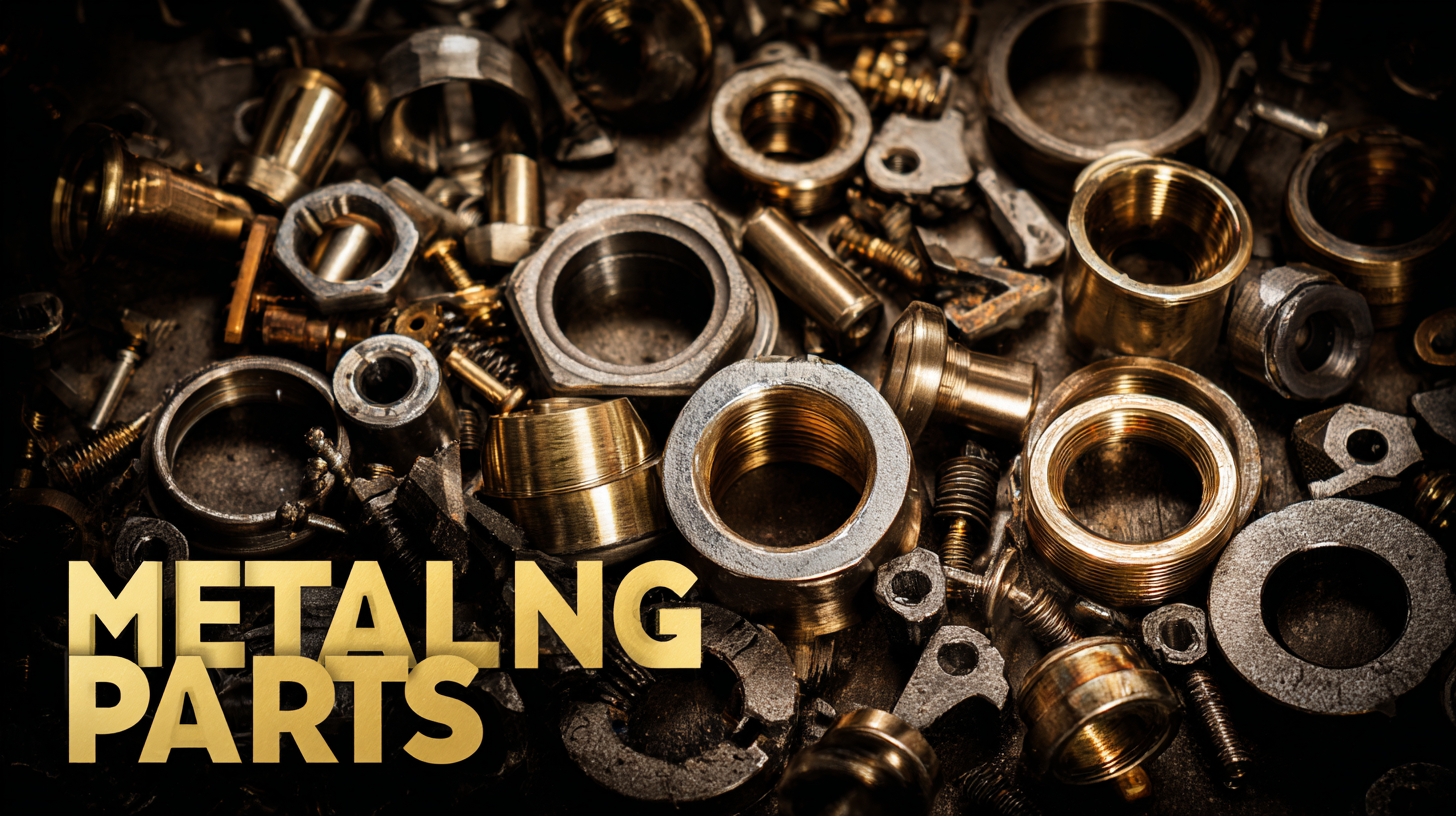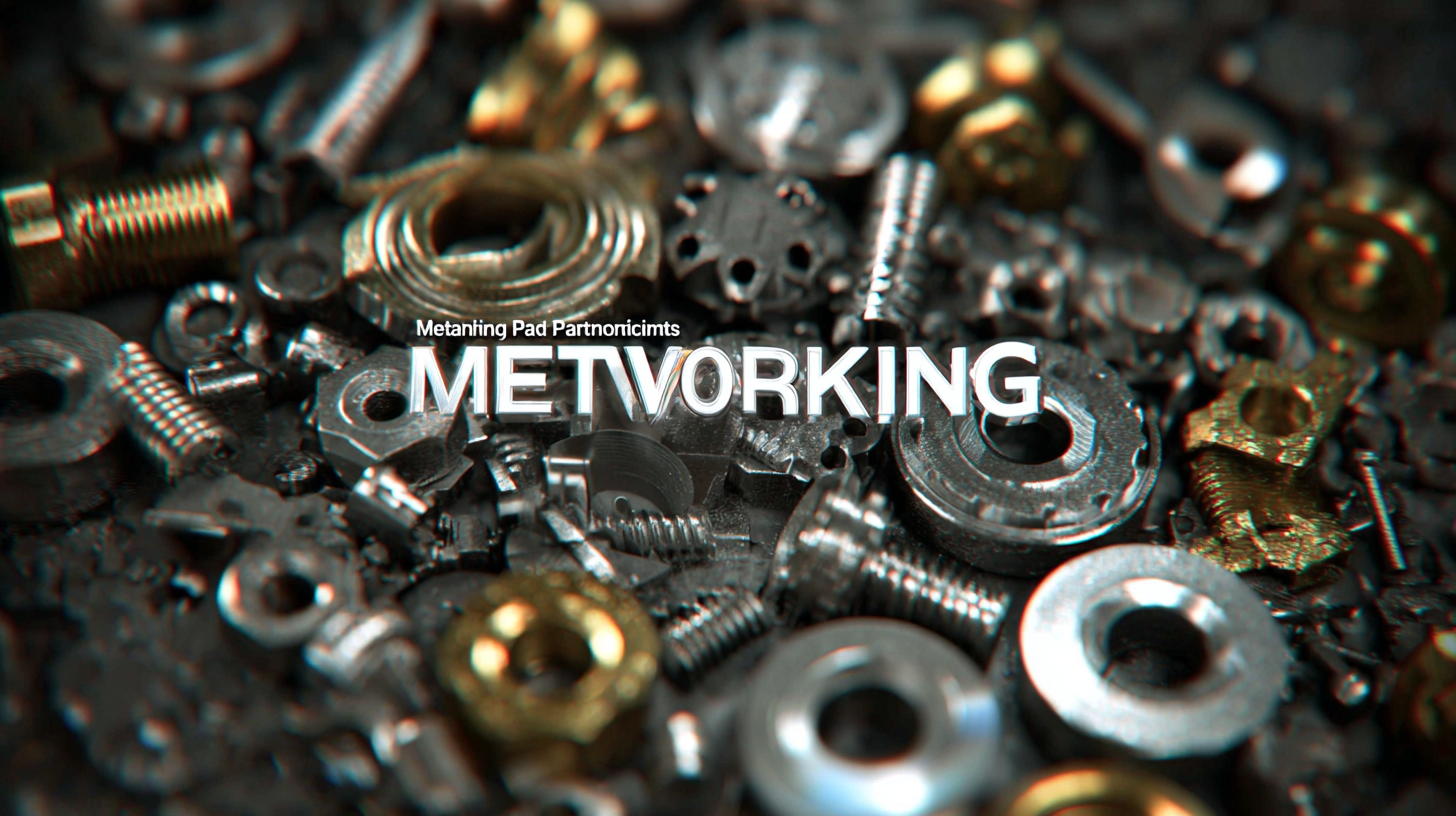
- sales@bjbod.com
- Mon - Sat at 7:00AM to 9:00PM

In the increasingly globalized manufacturing landscape, understanding industry production standards is paramount for sourcing the best metalworking parts worldwide. According to a report by the Global Industry Analysts, the metalworking industry is projected to reach $228 billion by 2025, driven by the rising demand for precision-engineered components across various sectors, including aerospace, automotive, and machinery. As technological advancements lead to higher production efficiencies, businesses must navigate complex supply chains to find reliable partners that meet stringent quality standards. With 60% of manufacturers citing quality control as their top priority, it is essential to scrutinize the industry standards governing metalworking of parts to ensure compliance and excellence in production. This blog will delve into effective strategies and insights for sourcing top-tier metalworking components in an ever-evolving marketplace.

When sourcing metalworking parts, understanding key technical specifications is crucial for ensuring quality and performance. According to the National Institute of Standards and Technology (NIST), precision in dimensions, tolerances, and surface finishes is vital for parts to function correctly within their intended applications. For example, the ISO 2768 standard outlines general tolerances for linear dimensions, angular dimensions, and geometrical tolerances, providing a framework that many industries depend on.
Tip: Always verify the manufacturer's adherence to recognized standards. This not only guarantees that the parts will fit well together but also enhances the longevity and reliability of the final product.
Moreover, material selection plays a critical role in the sourcing process. The right choice can significantly impact the durability and performance of metalworking components. A report by Technavio indicates that stainless steel and aluminum are among the most sought-after materials in the metalworking industry, primarily due to their excellent corrosion resistance and lightweight properties.
Tip: Engage in discussions with potential suppliers about their material sources and certifications to ensure they meet your project requirements. This step can prevent future complications and ensure you’re investing in high-quality parts.
| Specification | Description | Unit | Industry Standard |
|---|---|---|---|
| Material Type | The type of metal used for production, such as aluminum, steel, or brass. | N/A | ASTM, ISO |
| Dimensional Tolerance | The allowable variation in dimensions from specified measurements. | mm/inches | ISO 2768 |
| Surface Finish | The texture and smoothness of the metal surface after machining. | Ra (μm) | ISO 1302 |
| Heat Treatment | Processes such as annealing or hardening to enhance material properties. | N/A | ASTM, ASM |
| Coating Type | The application of protective or functional coatings such as anodizing or plating. | N/A | ASTM B733 |
In today's competitive landscape, sourcing high-quality metalworking components is crucial for manufacturers striving for excellence. To streamline this process, it's essential to identify leading global suppliers known for their . As industries evolve, so do the capabilities of suppliers, making them key players in the metalworking sector. Countries like China are emerging as significant innovators, with advanced production techniques and a growing array of domestic companies delivering top-tier products. This shift is not just indicative of market expansion but also of the increasing importance of innovation in meeting the demands of modern manufacturing.
Among the top global suppliers of metalworking parts, several stand out due to their commitment to quality, customer service, and adaptability to market needs. Companies that prioritize technological advancements, such as the integration of CNC machines and cutting-edge production methods, are paving the way for future growth. With the metalworking fluids and coolants market anticipated to expand significantly in the coming years, suppliers who can combine competitive pricing with exceptional service will lead the charge. Manufacturers must carefully evaluate these partners to ensure a steady supply of superior components that align with their production standards and business goals.
Choosing the right metals for your projects is crucial, especially in industries heavily reliant on metalworking parts. With the shift toward renewable energy systems, such as wind and solar power, understanding material standards becomes even more paramount. For example, there is a growing demand for metals like nickel and copper in constructing sustainable electrical grid systems. As we transition to renewable energy, sourcing high-quality metal materials will not only contribute to project efficiency but also align with the global movement toward sustainable practices.
**Tip 1:** When sourcing metals, prioritize suppliers that adhere to strict environmental and social standards. This ensures responsible raw material management and can enhance the sustainability profile of your projects.
In the context of critical minerals, such as those uncovered at recent exploration efforts in Alaska, it’s essential to stay informed about the availability and applications of different metals. Recognizing the vital role these materials play in modern infrastructure will assist you in making informed decisions for your projects.
**Tip 2:** Keep an eye on emerging markets and developments in the metals industry. This knowledge can provide you with insights into which materials will be most beneficial for your future projects and help you avoid potential supply chain disruptions.
When sourcing metalworking parts globally, understanding the essential certifications and compliance standards is crucial for ensuring quality and reliability. Industry certifications such as ISO 9001, which focuses on quality management systems, serve as a benchmark for manufacturers and suppliers. This certification indicates that a company has implemented effective processes to ensure consistent production quality, ultimately leading to enhanced customer satisfaction. It is vital for buyers to verify that their suppliers hold relevant certifications, as this can significantly impact the longevity and performance of the metal parts in various applications.

In addition to ISO certifications, compliance with industry-specific standards such as those set by ASTM International or the American National Standards Institute (ANSI) is equally important. These organizations establish regulations that dictate material specifications, testing methods, and safety requirements for metalworking parts. By sourcing from manufacturers that adhere to these standards, companies can mitigate risks associated with subpar materials and ensure that the parts will perform as expected in critical applications.
Adopting a thorough approach to understanding and verifying certifications not only fosters trust but also helps businesses maintain a competitive edge in the increasingly global market.
When sourcing metalworking parts, quality assessment is crucial to ensure that the components meet your specific requirements and industry standards. One effective practice is to establish clear quality criteria tailored to your project's needs. This includes defining tolerances, materials, and surface finishes that align with your operational environment. By creating a checklist of these criteria, you can systematically evaluate potential suppliers on their ability to provide parts that meet your expectations.

Another best practice is to conduct a thorough supplier audit. This involves reviewing the manufacturing processes, quality control protocols, and certifications that the supplier holds. Visiting the facility, if possible, allows for a firsthand look at the equipment and staff expertise. Additionally, requesting samples and testing them against your quality standards can provide valuable insights into their consistency and reliability. By incorporating these practices into your sourcing strategy, you will not only enhance the quality of your metalworking components but also build long-lasting relationships with trusted suppliers.